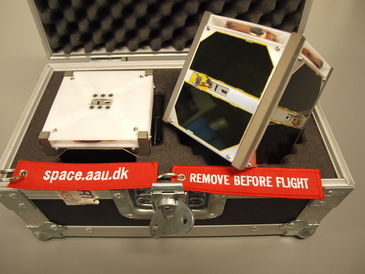The Hindu newspaper reports that the first launch of the year by the Indian Space Research Organisation (ISRO) will be the PSLV-CA (PSLV-C20). It will carry the ocean study spacecraft SARAL as well as satellites carrying amateur radio payloads. The launch into a 785 km orbit is currently planned to take place on February 25.
The Zarya website reports that among the satellites that will be on the launch are:
SARAL (Satellite with ARgos and ALtiKa) ocean study spacecraft is a joint ISRO – CNES mission aimed at sun-synchronous orbit with descending node at 18:00 local time, and altitude around 800 km. Ka-band radar altimeter operating at 35.75 GHz: http://smsc.cnes.fr/SARAL/
STRaND-1 – will carry a Google Nexus One Android smartphone into space to demonstrate the feasibility of using cheap smartphone electronics to control a spacecraft. There will be an amateur radio AX.25 packet radio downlink on 437.568 MHz using a data rate of 9k6 bps.
STRaND-1 information http://www.amsat-uk.org/?p=12196
STRaND-1 videos http://www.amsat-uk.org/?p=12472
NEOSSat (Near Earth Object Surveillance Satellite) – space telescope that will split its time 50/50 to search for near-Earth asteroids that could potentially impact the Earth, and search for satellites and space debris in orbit around the Earth. Research project for Defence Research and Development Canada (DRDC):
http://www.asc-csa.gc.ca/eng/satellites/neossat/
Sapphire – Canadian Department of National Defence first dedicated military satellite, designed to provide tracking data on space objects at orbit altitudes between 6,000km and 40,000km, data will shared with the US Space Surveillance Network:
http://www.sstl.co.uk/Missions/Sapphire/Sapphire/Sapphire–The-Mission
CanX-3a, BRITE (BRIght-star Target Explorer) – small satellite designed to make photometric observations of bright stars in order to study their variability. Built by the University of Toronto Institute for Aerospace Studies Space Flight Laboratory, and operated by the Université de Montréal and University of Vienna. It is understood it will be using S-Band (2234.4 MHz 500mW) for telemetry downlinks and will have 145.980 MHz 100mW CW Beacon using 15 WPM Morse Code, repeated at 30 second intervals: http://www.utias-sfl.net/nanosatellites/CanX3/
TUGSat-1 (Technische Universität Graz Satellit), BRITE – Austria – small satellite from Austria designed to make photometric observations of bright stars in order to study their variability. It will be using S-Band (2234.4 MHz 500mW) for telemetry downlinks and will have 145.980 MHz 100mW CW Beacon using 15 WPM Morse Code, repeated at 30 second intervals: http://www.tugsat.tugraz.at/
AAUSat 3 – 1U cubesat developed and constructed by students from Department of Electronic Systems at Aalborg University Denmark, testbed for a pair of AIS receivers concentrating on the area around Greenland in cooperation with the Danish Maritime Authority. The IARU Amateur Radio coordinated frequency is 437.425 MHz and the radio link will use Viterbi and Reed Solomon encoding:
http://www.space.aau.dk/aausat3/
Due to additional 5 minuttes delay to 13:31 CET a new TLE has been generated
AAUSAT3
1 30000U 13010D 13056.53765324 .00000000 00000-0 -11606-4 0 0011
2 30000 98.4714 245.1613 0004579 356.2524 218.6600 14.32690253000011
Read the Hindu article at
http://www.thehindu.com/sci-tech/science/isro-lines-up-saral-for-february-restored-gslv-for-april/article4317062.ece
Zarya Launches and Orbital Operations Calendar
http://www.zarya.info/Calendar.php

You must be logged in to post a comment.